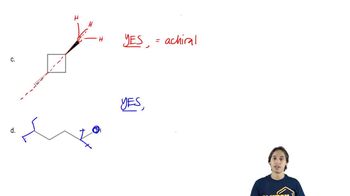Multiple Choice
What is the relationship between these two molecules?
 Verified step by step guidance
Verified step by step guidance Verified video answer for a similar problem:
Verified video answer for a similar problem:



 3:44m
3:44mMaster Using chiral centers to predict types of stereoisomers. with a bite sized video explanation from Johnny
Start learning